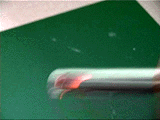For the following processes, discuss what happens with entropy and temperature, formulate the law of balance of entropy, and sketch appropriate TS-diagrams.
a. Take an immersion heater in a liquid such as water or glycol. The heater is turned on. Consider the following systems: a1: Liquid only, a2: Liquid plus immersion heater. Formulate the law of balance of entropy for the system for a1 and a2 for two conditions: (1) perfect thermal insulation, and (2) imperfect insulation. Sketch a TS-diagram for the liquid for all the situations mentioned.
b. Air is compressed in a cylinder with the help of a piston. The air cannot exchange heat with its surroundings. After a little while, the air is expanded again. Sketch the TS-diagram for the following situations: b1: No friction in the air (air is completely elastic), b2: internal friction in air. c. Water at 20°C is filled into a container and placed inside a freezer (internal temperature is –20°C). (1): Sketch the temperature as a function of time. (2): Sketch the TS diagram for the body | | of water (indicate the direction of the process in the diagram). (3): Formulate the law of balance of entropy of the body of water for all phases of the process you can identify. d. Air is compressed in a cylinder with the help of a piston. You want the temperature of the air to remain constant. Sketch the TS-diagram of the process. What do you have to do to make this process possible. Formulate the law of balance of entropy for the body or air. e. Assuming that the air in b2 is expanded so that the final temperature is equal to the initial value, what will be the volume of the air at the end compared to the beginning? f. A room is heated with a fire. Take the room and the oven as a single system. Formulate the law of balance of entropy. What can you say about the magnitudes of the terms appearing in the law of balance for the periods when the room is getting warmer and when the temperature stays constant. |

